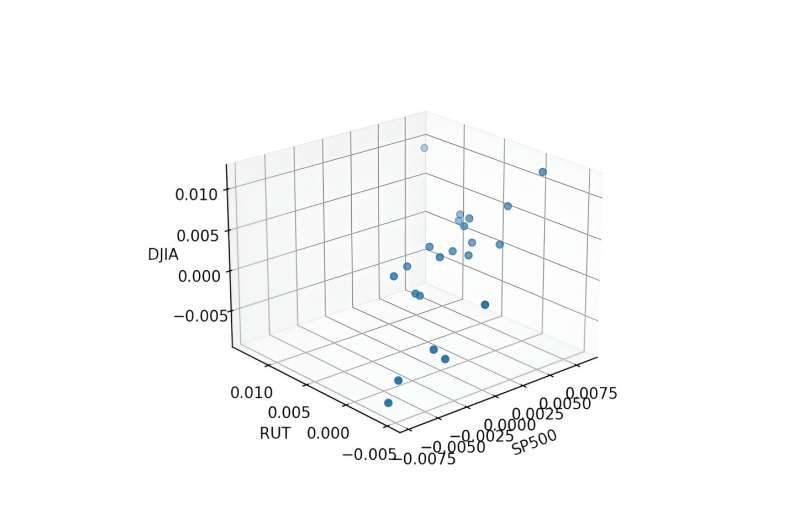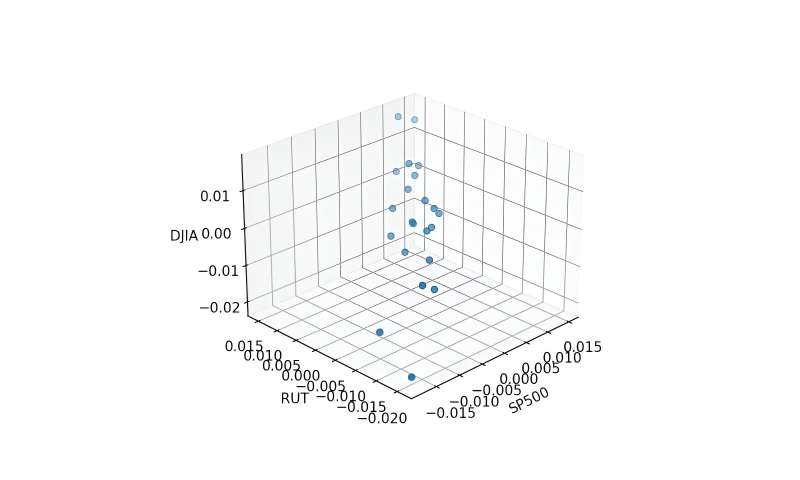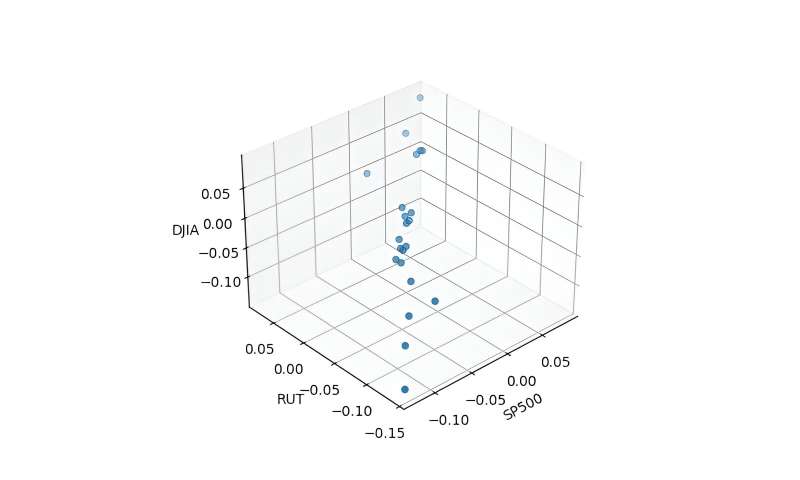This article has been reviewed according to Science X's editorial process and policies. Editors have highlighted the following attributes while ensuring the content's credibility:
fact-checked
proofread
New theory links topology and finance

In a new study published in The Journal of Finance and Data Science, a researcher from the International School of Business at HAN University of Applied Sciences in the Netherlands introduced the topological tail dependence theory—a new methodology for predicting stock market volatility in times of turbulence.
"The research bridges the gap between the abstract field of topology and the practical world of finance. What's truly exciting is that this merger has provided us with a powerful tool to better understand and predict stock market behavior during turbulent times," said Hugo Gobato Souto, sole author of the study.
Through empirical tests, Souto demonstrated that the incorporation of persistent homology (PH) information significantly enhances the accuracy of non-linear and neural network models in forecasting stock market volatility during turbulent periods.
-

The difference between the average distance of normalized stock returns from two different periods can be used as an indicator to foresee a financially turbulent period by defining a threshold value to be used during normal periods since the average distance is higher during normal periods than during preceding and turbulent periods. Nonetheless, the issue with this approach is the fact that average distance of normalized stock returns suffers from the curse of dimensionality and fails to detect nonlinear and complex relationships in the data. The curse of dimensionality that average distance of normalized stock returns suffers is explained by the fact that as the number of dimensions (or stocks in this case) tends to infinity, the ratio between the distance of any points (say A and B), and the distance of any other points (say A and C) approaches 1. As a result, the average distance becomes meaningless. On the other hand, the implementation of PH information through WD or L^n norms of Persistent Landscape does not suffer from these issues. Hence, this is the reason for the success of the implementation of PH information in recent studies and its choice in this study. Credit: Hugo Gobato Souto -

The difference between the average distance of normalized stock returns from two different periods can be used as an indicator to foresee a financially turbulent period by defining a threshold value to be used during normal periods since the average distance is higher during normal periods than during preceding and turbulent periods. Nonetheless, the issue with this approach is the fact that average distance of normalized stock returns suffers from the curse of dimensionality and fails to detect nonlinear and complex relationships in the data. The curse of dimensionality that average distance of normalized stock returns suffers is explained by the fact that as the number of dimensions (or stocks in this case) tends to infinity, the ratio between the distance of any points (say A and B), and the distance of any other points (say A and C) approaches 1. As a result, the average distance becomes meaningless. On the other hand, the implementation of PH information through WD or L^n norms of Persistent Landscape does not suffer from these issues. Hence, this is the reason for the success of the implementation of PH information in recent studies and its choice in this study. Credit: Hugo Gobato Souto
"These findings signal a significant shift in the world of financial forecasting, offering more reliable tools for investors, financial institutions and economists," added Souto.
Notably, the approach sidesteps the barrier of dimensionality, making it particularly useful for detecting complex correlations and nonlinear patterns that often elude conventional methods.
"It was fascinating to observe the consistent improvements in forecasting accuracy, particularly during the 2020 crisis," said Souto.
The findings are not confined to one specific type of model. It spans across various models, from linear to non-linear, and even advanced neural network models. These findings open the door to improved financial forecasting across the board.
"The findings confirm the theory's validity and encourage the scientific community to delve deeper into this exciting new intersection of mathematics and finance," concluded Souto.
More information: Hugo Gobato Souto, Topological tail dependence: Evidence from forecasting realized volatility, The Journal of Finance and Data Science (2023). DOI: 10.1016/j.jfds.2023.100107
Provided by KeAi Communications Co.



















